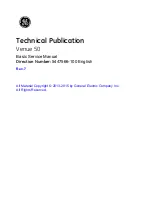
Introducing the MSQ
The Source–An Introduction to API Techniques ________________________________________________
60
80
100
120
140
160
180
200
220
240
260
280
300
m/z
0
100
%
240
241
HO
HO
OH
NH tBu
Chemical structure of salbutamol,
(molecular weight 239)
Figure 1-8. Electrospray mass spectrum of salbutamol in positive ion
mode
The base peak at m/z 240 (see Figure 1-8) corresponds to the protonated
salbutamol molecule. It is notable that ESI results in a prominent base peak
with minimal fragmentation, quite dissimilar from the results often achieved
with GC/MS.
Mechanism of Ion Generation
Electrospray ionization operates by the process of emission of ions from a
droplet into the gas phase, a process termed Ion Evaporation. A solvent is
pumped through a stainless steel insert capillary that carries a high potential,
typically 3 to 5 kV (see Figure 1-9). The strong electric field generated by
this potential causes the solvent to be sprayed from the end of the insert
capillary (hence, electrospray), producing highly charged droplets. As the
solvent is removed by the desolvation process, the charge density on the
surface of the droplets increases until the Rayleigh limit is exceeded; after
this, a multitude of smaller droplets are formed by coulombic explosion.
This process is repeated until charged sample ions remain. These ions are
then available for sampling by the ion source.
+
+
+
+
+
+
+
+
+
+
+
+
+
+
+
+
+
+
+
+
-
-
-
-
-
-
-
-
-
-
+
+
+
+
+
++
-
Insert cap3-5 kV
Droplet
containing
ions
As the droplet
evaporates, the
electric field
increases and ions
move towards
the surface
Ions evaporate
from the surface
+
+
+
+
+
+
+
+
+
+
+
+
+
Figure 1-9. Positive ion electrospray mechanism
1-10
__________________________ MSQ Hardware Manual ____________________________















































